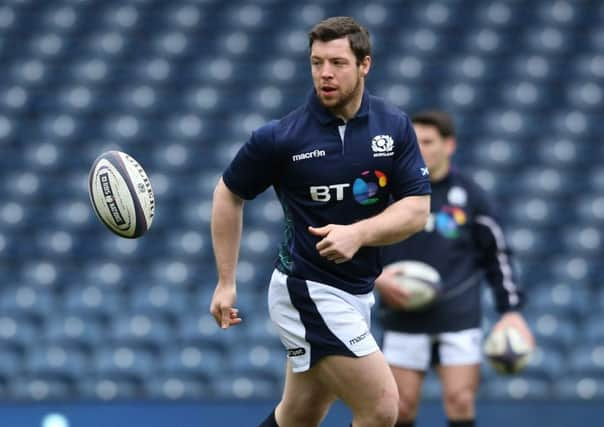Allan Massie: Credit SRU for giving Scottish rugby a real lift


In his early international days, he was a very fine player about the field, a notably effective ball-carrier, but no more than moderately good at the set-piece. Gradually, with, I suppose, a lot of hard work and applied intelligence, he had become a very good scrummager too. The front row of Dickinson, pictured, Ross Ford, and WP Nel was as good as any we have had since the game went professional. So it’s disappointing that injuries have taken their toll, and that that front row hadn’t lasted a bit longer.
Both his colleagues have also had injury problems, Nel intermittently over the last 18 months, and Ford missing the whole of last season. Richard Cockerill was, however, able to name him as a replacement in the bloated squad for Edinburgh’s pre-season friendly against Bath, but one assumes it will be some time before he can hope to return to his best.
Advertisement
Hide AdAdvertisement
Hide AdMeanwhile, Stuart McInally has established himself as Gregor Townsend’s first-choice hooker, with Fraser Brown in reserve. Ford is likely to find it hard to regain what for so long was his scarcely contested place in the Scotland team. Nevertheless I would suppose if he comes through the next months unscathed, and returns to something like his best, his vast experience may prove invaluable when Scotland are gearing up for the World Cup 12 months from now.
In many respects the Scottish game is in much better health than at any time in the professional era. The national side has been winning matches and admirers. Nobody now takes Scotland lightly, which certainly wasn’t the case a few years ago. Likewise both Edinburgh and Glasgow are established in the upper reaches of the Guinness Pro 14 and both have qualified for the European Champions Cup this season. We’ll have some time to wait before seeing how the semi-pro Super Six experiment works out, but it may eventually prove a useful bridge between the amateur and professional leagues.
Then the SRU, so often the object of sharp criticism, deserves some thanks and congratulations. In the first years of this century there was a genuine fear that Scotland couldn’t support the professional game, even with only two clubs, unlike the four in Ireland and the four in Wales. Well, that fear has gone. The SRU is apparently on a sound financial base, and is now capable not only of supporting and developing the professional game, but also, just as importantly, giving much-needed support to amateur clubs, the academies where the next generation of players is nurtured, and to the women’s game as well.
Moreover, Murrayfield is now full for international matches, and not only for those against countries that bring a huge travelling support. None of this seemed likely even ten years ago. As journalists – and indeed fans – we are always more likely to criticise the men and women in committees and the board-rooms, but sometimes they deserve our praise and gratitude. This is one of these times.
Nevertheless, in some respects the structure is still a bit rickety. It’s good Glasgow can almost always fill Scotstoun, but it’s a small ground compared to Thomond Park in Limerick and whatever Ravenhill in Belfast is now called. One can’t be confident that Glasgow, in a different stadium, could draw as big a crowd as Munster and Ulster regularly attract. It’s good Edinburgh will at last have a proper ground of their own but playing in the great city of Edinburgh, with a rugby-playing hinterland, attendances at Edinburgh’s matches remain pathetic.
There are other worries which are not peculiar to Scotland. The number of injuries sustained in rugby today, and the nature of these injuries, are causing general anxiety. There are many parents, among them some rugby enthusiasts, who would rather their young played a less violent sport, one less likely to leave someone crippled when scarcely even grown-up.
Allied to this, though not necessarily reflecting this fear, there are worries about the number of people playing rugby. Clubs which used to field three or four XVs – sometimes even five or six – now often struggle to field two, or find that their scheduled opponents can’t raise a team or call off because they have no reserve front-row forwards available.
On the other hand, there are rugby clubs now in parts of the country which 50 years ago never saw an oval ball, where indeed the nearest to a scrum or ruck you might see would have been a litter of piglets pushing and shoving to get at their mother sow’s teats.